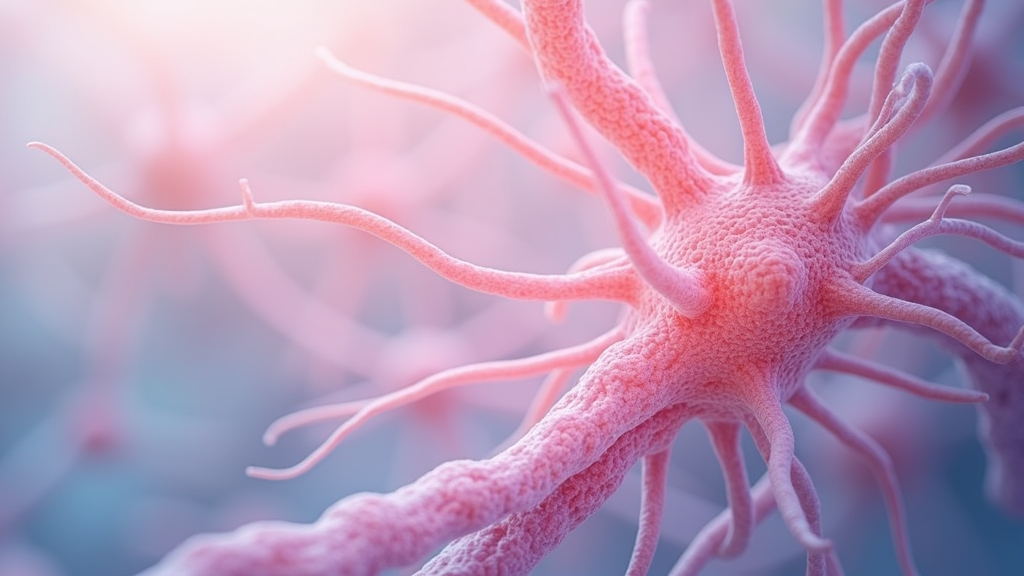 Vagus Nerve Trigger Points: Boost Your Health
Vagus Nerve Trigger Points: Boost Your Health
Understanding how small, tight spots along your vagus nerve affect your comfort and mood can open a path toward better overall nerve health. Many people are surprised to learn that these sensitive spots may be at the root of feelings of tension or anxiety. It all begins with knowing what the vagus nerve does and where trigger points may form.
Sometimes, these trigger points cause discomfort, anxiety, or unexplained tension. Addressing them might ease symptoms that otherwise seem mysterious. In this guide, we explain what vagus nerve trigger points are, how you can identify them, and offer practical advice on relieving discomfort and supporting nerve function.
Understanding Vagus Nerve Trigger Points
Before jumping into techniques, it’s important that we understand the basics. The vagus nerve is one of the longest nerves in the body, helping control functions such as digestion and heart rate. Trigger points along this nerve are small, sensitive areas found in the muscles or surrounding connective tissue. They may cause sensations of tightness or pain that sometimes radiate to other areas of the body.
Over time, factors like stress, repetitive strain, or injury can lead to the formation of these tender spots. Many experience chronic tension or headaches that may be linked to these areas, even if the connection isn’t immediately clear.
Identifying Your Trigger Points
The first step is to pinpoint where discomfort is occurring. Take a few quiet moments to check in with your body. Ask yourself: Where do I feel tension most often? Is there pain in the neck or torso that seems to affect my mood?
Questions to Ask Yourself:
- Have I had sudden bouts of tension in my neck or chest?
- Do I experience unexplained anxiety or stress during the day?
- Are there specific activities or postures that worsen the discomfort?
- Have I noticed patterns in when the trigger points become more pronounced?
Reflecting on these questions can give you a clearer picture of what might be causing your discomfort. This self-assessment is not a substitute for an official diagnosis but can be a useful starting point in understanding your body’s signals.
Techniques to Relieve Trigger Point Discomfort
Once you’ve identified potential trigger points, it’s time to explore methods to ease the discomfort. Here are some practical techniques that many have found helpful.
Simple Self-Massage Techniques:
- Gentle Pressure: Use your fingertips to apply light pressure on the area where tension is most noticeable. Hold the pressure for about 20-30 seconds before slowly releasing.
- Circular Motions: Make small circles on the spot using firm, gentle movements. This can help increase blood flow and relax the surrounding muscle tissue.
- Heat Therapy: A warm compress can soothe the area, as the heat helps relax muscles where these sensitive spots form.
Breathing and Relaxation Practices:
- Deep Breathing: Slow, deep breaths promote relaxation throughout your body. Try breathing exercises that involve inhaling for a count of four, holding for four, and exhaling for four – a technique sometimes called box breathing.
- Mindful Meditation: Spending a few minutes each day sitting quietly and focusing on your breath can lower stress levels and may reduce the intensity of trigger points.
Mixing these techniques into your daily routine has helped many improve overall comfort. Experimenting with different practices can help you determine which ones work best for your particular situation.
Managing Stress to Reduce Trigger Point Aggravation
Stress is a common trigger for muscle tension and can worsen the pain from trigger points. Managing stress is as important as physical remedies when it comes to easing discomfort. Incorporating stress management into your daily life creates a calmer state that naturally reduces the formation of tight spots along the vagus nerve.
Strategies to Manage Stress:
- Regular Breaks: If you work at a desk, set a timer to remind you to take a short break each hour. These breaks allow you to stretch and relax, preventing prolonged tension.
- Physical Activity: Even light exercise, such as a short walk or gentle yoga session, can reduce stress and improve circulation.
- Journaling or Creative Outlets: Writing down your feelings or engaging in a hobby offers a mental break that may also ease muscle tension.
Reducing overall stress not only supports better nerve health but also boosts your sense of well-being. Consider which of these strategies might best fit your lifestyle and try integrating them gradually.
Creating a Routine for Better Nerve Health
Establishing a regular routine to address vagus nerve trigger points can lead to lasting benefits. A consistent self-care schedule can make noticeable improvements in your comfort and overall nerve function without the need for drastic changes overnight.
Building Your Routine:
- Start Simple: Choose one new habit—perhaps a daily five-minute self-massage or a brief breathing exercise—and commit to it for a week.
- Gradual Integration: Once you’re comfortable, slowly add another practice such as stretching or mindful meditation. Over time, these small steps can add up to a robust self-care routine.
- Keep It Flexible: Understand that some days are better than others. Give yourself permission to adjust your routine based on how you feel.
This approach ensures that your routine supports both your physical and emotional needs without feeling overwhelming. Remember that small, consistent efforts are often the most sustainable.
Optimizing Your Environment for Healing
Your surroundings can play an important role in how effectively you manage trigger points. Creating a space that promotes relaxation is both a mental and physical exercise, one that can support your healing process.
Ways to Step Up Your Environment:
- Create a Quiet Spot: Designate a corner of your home where distractions are minimized. A peaceful area can be ideal for meditation or simply unwinding after a long day.
- Control Lighting: Natural light is best, but if that isn’t possible, choose soft lighting. Bright, harsh lights can sometimes contribute to feelings of stress.
- Keep It Organized: A tidy space can have a big impact on lowering stress. A clutter-free area helps clear your mind and creates a calm atmosphere.
- Soundscapes: Gentle background sounds, such as nature noises or soft instrumental music, can further calm your environment and support relaxation.
Giving a boost to your physical surroundings can have an immediate impact on your mood and help ease nerve tension. Consider making small adjustments to create a space that feels both peaceful and supportive.
Staying Consistent and Adjusting Over Time
Consistency is key when working with trigger points. Establishing daily habits that promote comfort can make a significant difference over time, even though some days may be tougher than others.
Tips for Consistency:
- Set Clear Intentions: Define what habits you want to adopt and why. Having clear goals helps maintain focus, even on challenging days.
- Track Your Progress: Keep a simple journal of your routines and note any changes in how you feel. This can help you spot what works best and where adjustments are needed.
- Stay Flexible: If one method isn’t giving the expected relief, try another approach. Listening to your body is very important.
- Feedback Loop: Regularly review what is working and adjust your routine as needed. Flexibility in your approach can lead to better long-term results.
Allow yourself the freedom to experiment. Even gradual adjustments can have a meaningful impact on your overall comfort and well-being.
Common Questions & Troubleshooting
What exactly are vagus nerve trigger points?
These are small, sensitive spots in the tissues around the vagus nerve. They can cause discomfort in areas such as the neck or upper back and may contribute to a general sense of stress. Although not an official diagnosis, these areas can indicate where tension is building up.
How do I know if my discomfort is related to trigger points?
- Consider whether pain appears after periods of stress or repetitive strain.
- Notice if specific self-care techniques help ease the discomfort.
- If the problem persists or feels severe, it may be wise to consult a professional who specializes in nerve or musculoskeletal health.
When should I look for professional help?
If your tension becomes overwhelming or begins interfering with daily activities, seeking expert advice is a good idea. Professionals in massage therapy, physiotherapy, or acupuncture might offer valuable solutions.
Final Thoughts & Next Steps
A deeper understanding of vagus nerve trigger points along with simple, practical techniques can significantly improve your well-being. Merging self-care practices with thoughtful changes in your daily routine can lead to a more relaxed and resilient body. Finding what works best for you is essential – sometimes, small changes make a big difference.
Your Action Plan:
- Start by spending a few minutes noting where you feel tension and consider if it may be connected to your vagus nerve.
- Incorporate one self-massage or deep breathing session into your daily routine and observe any differences.
- Create a relaxing environment tailored to ease tension. This could be a quiet corner with soft light and gentle sounds.
- If needed, adjust your habits gradually by tracking what methods provide the most relief.
What small step can you add to your self-care routine today? I hope these insights help you find greater comfort and a clearer path to overall well-being as you work through those nagging trigger points.

Leave a Reply